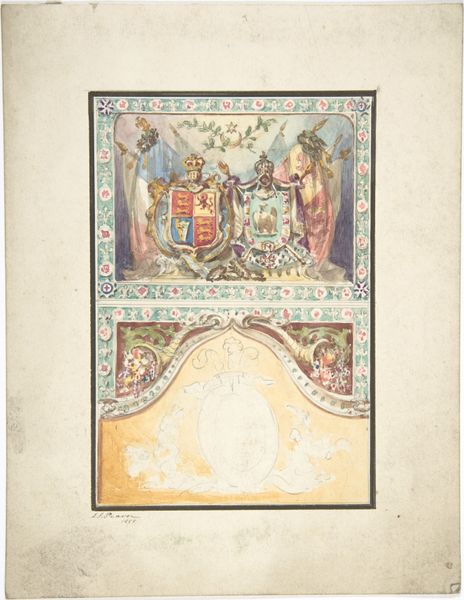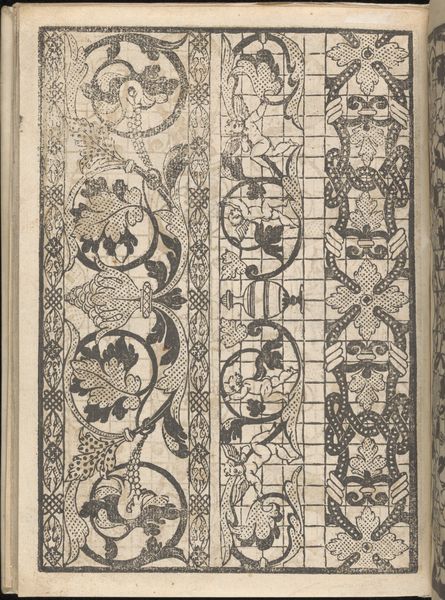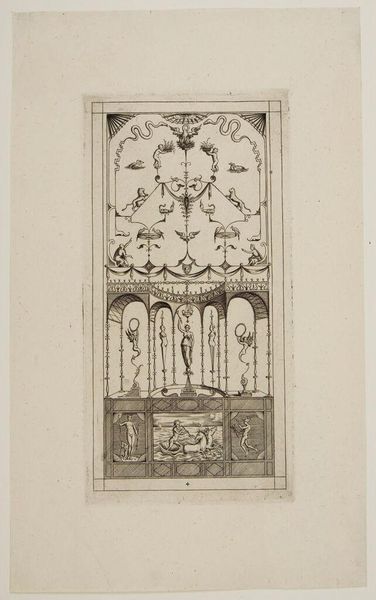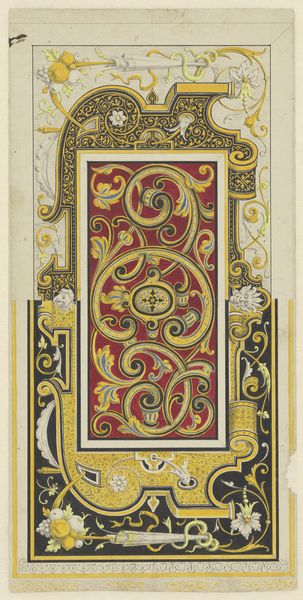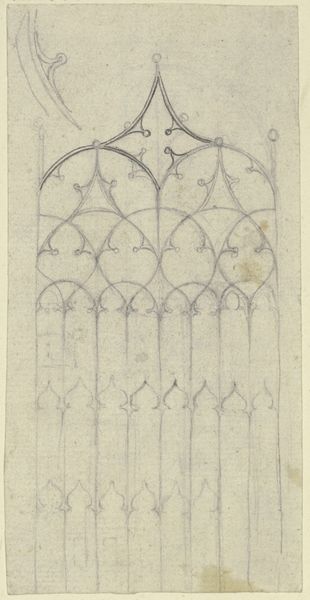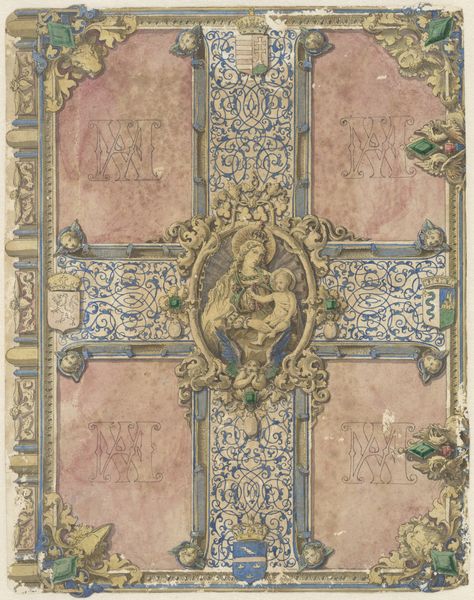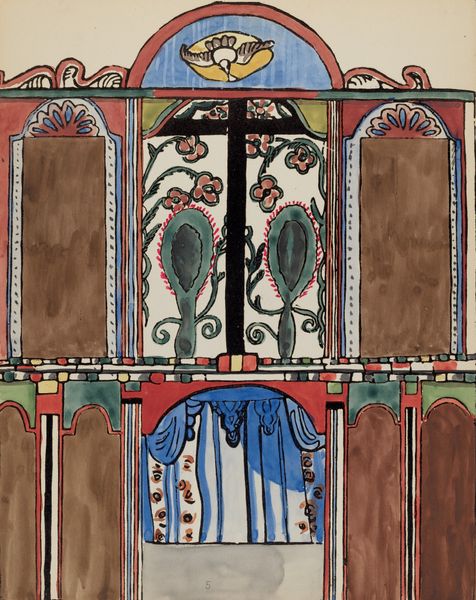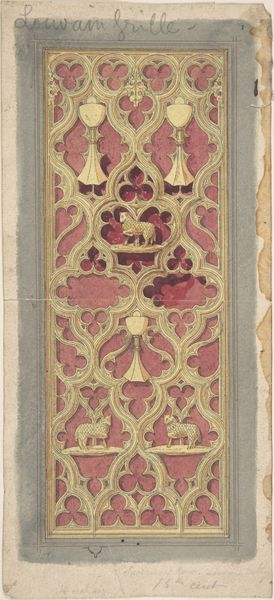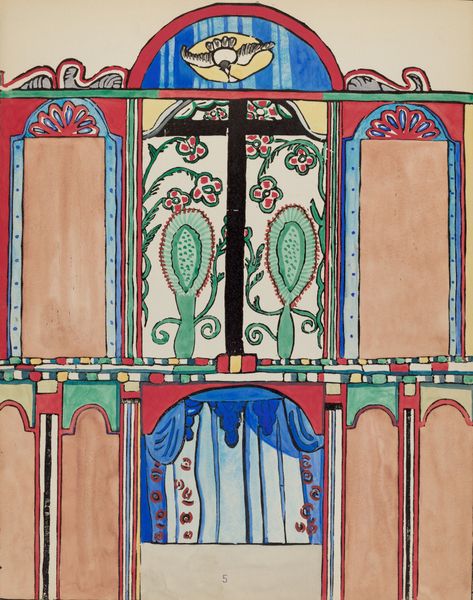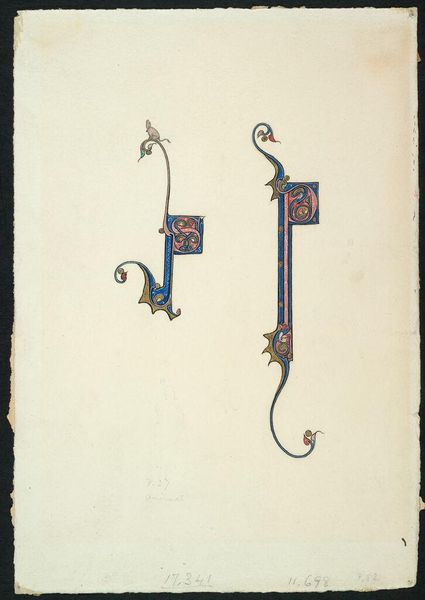
mosaic, drawing, watercolor
#
mosaic
#
drawing
#
byzantine-art
#
medieval
#
water colours
#
watercolor
#
geometric
#
decorative-art
#
watercolor
Dimensions: 262 mm (height) x 250 mm (width) (bladmaal)
Curator: Welcome. Here we have "Kopi af oldkristen mosaik," or "Copy of an Early Christian Mosaic," a watercolor drawing by Niels Larsen Stevns, created between 1902 and 1905. Editor: It's a fragment, really, isn't it? A captivating glimpse into something larger. The washes of watercolor lend a faded quality, reminiscent of frescoes flaking off a wall. Curator: Indeed. Stevns was deeply interested in the revival of medieval artistic traditions in Denmark. This drawing reflects a broader fascination with Early Christian and Byzantine art prevalent at the turn of the 20th century. He saw in these forms a sense of spiritual authenticity that he felt was lacking in modern art. Editor: Absolutely, there is a clear use of geometric forms in the different boxes and sections of the mosaic that provides an obvious rhythm to the image. Red, blues, and golds are dominant, all very medieval, wouldn't you agree? Curator: Precisely, and note the meticulous detail with which he renders each individual tessera. The act of copying itself becomes a form of interpretation, highlighting the ongoing dialogue between past and present. Stevns’s interest wasn't simply aesthetic; he sought to understand the function of these images within their original religious context, considering them important visual and social artifacts of their time. Editor: While you're absorbed in decoding its cultural role, I'm here marveling at its arrangement. Stevns understood balance – a pull between the fragmented areas of detail, and the broader harmony. I get a sense that each individual composition gives balance to the entire work. Curator: And, considering it as part of the collection in Statens Museum for Kunst, it allows visitors to contemplate how historical styles continue to resonate through copies and new artistic interpretations, broadening conversations about national and cultural identity, too. Editor: Seeing his work does urge us to consider not just what we're seeing, but how these artistic fragments form bridges across time, speaking a formal language all their own.
Comments
No comments
Be the first to comment and join the conversation on the ultimate creative platform.
